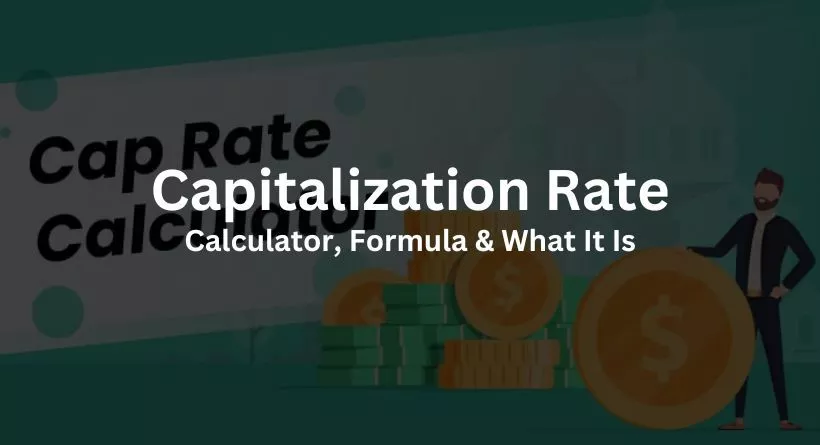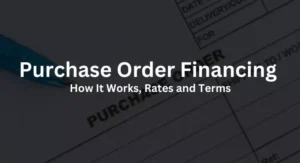
Real estate investors frequently use the capitalization rate, also known as the cap rate, to estimate the prospective rate of return on a certain asset. It has its limits and should only be one of several techniques used to assess if an investment property is a good deal, even though it may be used to estimate whether a property will generate enough of a return. The cap rate is determined as follows:
Cap rate = Net operating income / Current property value
Why Cap Rate Is Important
Comparing properties using cap rate can help you determine which one will likely provide the best return on investment (ROI). You can use your risk tolerance as a deciding factor when deciding between a safer investment with lower returns and one that can have higher risk but offer a better ROI. Considering the best- and worst-case scenarios for income and spending and analysing how they will impact the cap rate can help you achieve this.
What Is Considered a Good Cap Rate?
A capitalization rate of 4% or more is often seen to be preferable. However, this is dependent on a variety of variables, including the location of the property and your risk tolerance.
Properties that involve a higher amount of risk tend to have higher cap rates. This is due to the fact that high cap rates frequently signal a decline in property value. Investors can anticipate factors like unpredictable property values, more difficulty finding renters, and maintaining high occupancy rates throughout the year when purchasing less costly real estate.
You may also like reading: Best business phone systems of 2023
The same holds true for lower cap rates and riskier assets. Investment property owners often have an easier time finding renters and maintaining a high occupancy rate year-round since more costly residences are more likely to be situated in attractive neighbourhoods.
Factors That Affect the Cap Rate

The valuation of a property plays a significant role in calculating its cap rate. The following are elements that often affect a property’s valuation and its accompanying cap rate computation, although this can be achieved by conventional ways, such as getting a formal appraisal inspection:
Location:
A desirable location attracts more renters who are ready to pay a premium rent. Properties near amenities, such as retail establishments, entertainment venues, parks, reputable educational institutions, and job hubs, typically indicate a more desirable property location.
Features and amenities:
The qualities of a house might also affect how much rent a renter is ready to pay. This might involve specifics like the house’s size and the existence of a patio, tennis court, or backyard.
Cost of financing:
Property prices often decline when rates rise and loan costs rise because borrowers’ purchasing power declines. However, you may read our advice on how to acquire a small business loan to increase your chances of receiving the best rate available.
Housing supply and demand:
Unemployment rates and other economic variables might have an influence on the supply and demand of housing. People are less likely to be able to afford costly homes when there is a greater unemployment rate, which might result in lower market rents and property prices.
Who Should Use a Cap Rate
When comparing the possible risk and return on investment of various investment properties, you may utilise the cap rate. The cap rate can be used by landlords and long-term investors in both residential and commercial real estate (CRE) for a range of assets, including
Single-family investment homes
- Condominium and town home rental properties
- One- to four-unit multifamily residential investment properties
- Five-plus-unit apartment buildings
- CRE investment properties
Who Should Not Use a Cap Rate
On property estate that is not anticipated to provide rental revenue year-round, cap rate shouldn’t be applied. If you do this, the number will be distorted and you won’t get a trustworthy indication of the risk or potential return on investment. Following are some situations when applying the cap rate might not be appropriate:
Vacation homes and short-term rental properties:
Cap rate takes annual revenue into account, thus properties that only generate rental income intermittently throughout the year won’t provide you with a meaningful number for assessing the possible rate of return on an investment property.
Fix-and-flip investments:
Fix-and-flip properties are generally six-month ventures that are bought and sold. These properties are not suitable for cap rate evaluation since they are also unlikely to provide rental revenue.
Vacant land:
The cap rate won’t apply in this situation because buying land won’t result in any rental revenue. If you’re thinking about making this kind of purchase, see our article on how to acquire land.
Other Methods to Evaluate an Investment Property

The cap rate has restrictions and is not appropriate in all circumstances, much like other techniques of appraising investments. It is advisable to assess an investment using a variety of techniques. The additional resources listed below might help you decide whether an investment is a suitable one for you:
The 1% rule:
According to this, the rental income must equal at least 1% of the property’s purchase price.
The 50% rule:
According to this approach, you should anticipate that your spending will be equal to half of your revenue in order to account for costs associated with rental property. In order to estimate things like cash flow and net profit, you can utilise this figure.
Price to rent ratio:
This is derived by taking the median yearly rent in the region and subtracting it from the median house value. The ratio is meant to help you determine if renting a property or buying one is more cost-effective for renters. A ratio of 16 or higher, as a general rule, indicates that renting is preferable to buying.
Per-unit price:
This is computed by dividing the purchase price of a property by the number of rental units in a building.
Cash flow:
After all costs have been taken into account, cash flow will tell you how much money you should have. Subtract the expenses associated with the rental property, such as loan payments, property taxes, insurance premiums, and utility charges, from your rental revenue.
Gross rental yield:
This is computed by dividing the annual rental revenue of a property by its overall cost. The entire cost of the property should take into account items like the purchase price, loan closing charges, and money expended for additions or modifications. Typically, a rental yield of 7% or above is seen as good.
Return on investment (ROI):
By dividing the entire cost of the transaction by your yearly return, you may get your ROI. An ROI of more than 10% is typically seen as good.
Conclusion
The risk and possible return on investment for a property may be compared using cap rate. It works well for homes that consistently bring in rental money all year long. It does have some limits, like many other techniques used to assess investments, and you should use it as one of several strategies when determining if an investment is a fair value.





